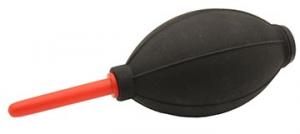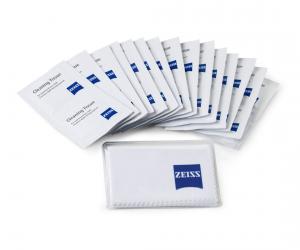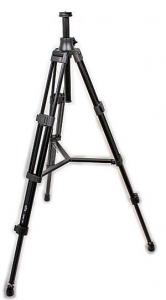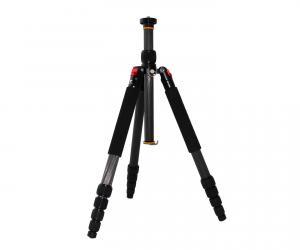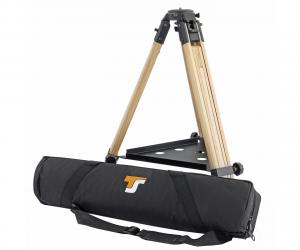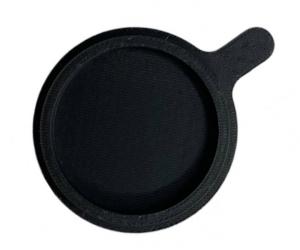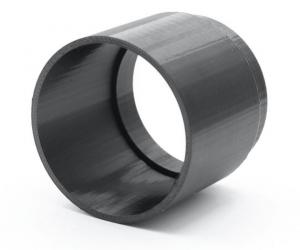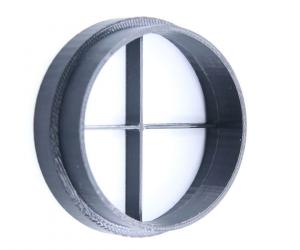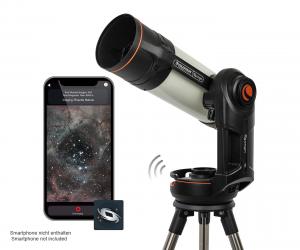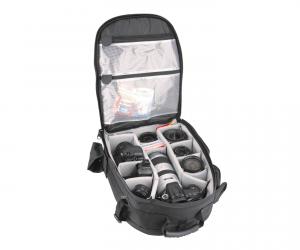- Telescopes
- Overview:
Telescopes - Achromatic Refractor
- Apochromatic Refractor
- Overview:
Apochromatic Refractor - ED Refractor - less color aberration than an achromatic
- SD APO - color free 2-element APO objective
- EDT APO - 3 element ED objective
- High End APO with 3-element APO objective - no color aberation
- Flatfield APO with flat field for Astrophotography
- All Apos and EDs from all manufacturers - large overview
- TS APO and ED from Japan with high quality optics
- Overview:
- Newtonian Telescopes
- Dobsonian Telescopes
- RC Ritchey Chretien Telescopes
- Casssegrain Telescopes
- Reflektor Telescopce with Lens Correcture
- Maksutov Cassegrain Telescopes
- GoTo Telescopes
- Solar Telescopes H-Alpha
- Overview:
- Mounts Tripods Rings Rails Power Supply ...
- Overview:
Mounts Tripods Rings Rails Power Supply ... - Mounts Equatorial with GoTo
- Mounts Equatorial without GoTo
- Mounts Azimutal with GoTo
- Mounts Azimutal without GoTo
- Mounts GoTo - Harmonic Drive
- Travel mounts for astro imaging
- Tripods Piers Polar Wedges
- Mount Control & Electronics
- Dovetail Clamps, Plates and Mount Adapters
- Tube Rings
- Power Supply
- Counterweights Balance Weights
- Mount Accessories - Other
- Overview:
- Telescope Accessories
- Overview:
Telescope Accessories - Eyepieces
- Barlows & Reducer Lenses
- Diagonal Mirrors and Prisms
- Binocular Viewers
- Finder Scopes
- Telescope Collimation and Test
- Cleaning Tools
- Transport and Storage
- Dust protection for Telescopes & Accessories
- Stray Light Protection
- Dewcaps and Heater
- Focusers, Adapters, Motorfocus
- Telescope DIY & Improvement
- Other telescope accessories
- Replacement Parts
- Overview:
- Filters
- Overview:
Filters - Color Filters and Color Filtersets
- Nebular Filters for Visual Observing
- Neutral-Density and Polfilter
- Photo Narrowband Nebular Filters
- Photo Broadband Filters
- Photo Planetary Filters
- Photo R-G-B and IR Cut Filters
- Photo - Filtersets
- Photometric Filters
- Clip Filter for DSLR Cameras
- Filter Wheels and Filterslider
- Solar Filters for white light
- Solarfilter for H-Alpha and Calcium
- Overview:
- Adaptors
- Overview:
Adaptors - Adapter 1,25" and 24,5mm
- Adapter 2"
- Adapter T2 - M42x0.75
- Adapter M48x0,75
- Adapter M54
- Adapter SC
- Adapter M63
- Adapter M68
- Adapter to other Threads
- Adapter Extensions
- Adapter camera bayonet
- Adapter Objective Filterthread
- Adapter Quick Changing , Rotation
- Adapter Eyepiece Projection
- Adapters Tilting
- Overview:
- Astrophotography and Photography
- Overview:
Astrophotography and Photography - Cooled Cameras
- Cameras without Cooling
- Deep-Sky Cameras uncooled
- Set-Offers Camera, Filter, Wheels
- Acessories for Cameras
- Travel mounts for astro imaging
- Imaging Correctors for Telescopes
- Autoguiding Cameras & Sets
- Everything for Guiding
- Focusing aids - Bahtinov mascs
- Flat Field foils and boxes
- Lenses for Cameras
- Piggyback Camera Holder
- Camera Bags, Photocases & more
- Digital Camera and Smartphone Adapter
- Other photo accessories
- Overview:
- Binoculars, Spotting Scopes, Microscopes, Range Finders
- Overview:
Binoculars, Spotting Scopes, Microscopes, Range Finders - Roof Prism Binoculars
- Binoculars with Porro prisms
- Binoculars from 100mm Aperture
- Binoculars with 1,25 inch eyepieces
- TSMX APO Binoculars
- Binoculars for Astronomy
- Binoculars Hiking Bird watching
- Monoculars - Opera Binoculars
- Accessories for Binoculars
- Spotting Scopes
- Range Finders
- Microscopy
- Bags for Phototripods & Binoculars
- Overview:
- Phototripods and Binomounts
- Books, Software
- Overview:
Books, Software - Books for Astronomy Beginners
- Star Charts and Planispheres
- Books about our Solar System
- Observing Tips for Amateurs
- Popular Astronomy Literature
- Teaching material
- Astrophotography books
- Telescopes, Observatories, Construction
- Calendars Yearbooks
- Software, Star Charts
- Books for Microscopers
- Books Nature and Animals
- Nature Photography TimeLapse
- Overview:
- Night Vision, Magnifiers, Weather, Domes & more
- Beginner Astronomy and Gift Ideas
- Second Hand & Special Offers
- New products
Manufacturer: ASI - ZWO
Product number: SEESTAR-S50
EUR698.00new
EUR 698,00RRP EUR 799,00you save 12.6% (EUR 101,00)
incl. 19 % VAT (DE)
The VAT indicated refers to that applicable in Germany. After logging in, the VAT amount is adjusted to the applicable VAT of the stored delivery country. Therefore, the final price may vary accordingly.
excl. 6.95 € shipping costs (DE)
more details to the shipping costs ...Please log in to calculate shipping costs to your country.
There are no reviews for this product
- Details..
- Technical data..
- In the box..
- Reviews..
- Manufacturer infos..
- Safety informations..
ZWO Seestar S50 Smart Telescope
Seestar S50 integrates a telescope, electric focuser, astronomical camera, dew heater, ASIAIR intelligent controller, altazimuth mount and filter wheel (UV/IR cut, duo-band, dark) into a single unit, with a body weight of only 2.5 kg.With the use of a mobile app, it allows for easy capturing of celestial objects such as the Sun, Moon, galaxies and nebulae.
Astrophotographic results obtained with this telescope on Astrobin
Here you can find some astrophotographs made with this telescope model: Link to AstrobinFully control your imaging
Quickly learn the weather and recommendations for tonights viewing, then select the celestial targets or landscape mode you are going to shoot.Click to start shooting - that´s how easy it is!
Discover the hidden universe
Observe the universe like never before: Seestar S50 allows you to create stunning images using live stacking mode. The more images you capture the more color and details will grow before your eyes. Things you can not witness with your naked eye will be gradually revealed.Immersive visual experience
The professional grade triplet apochromatic optics offers beautifully crisp images of the night sky with excellent control of chromatic aberration. The high-quality coating also helps reduce light loss.To increase the contrast of emission nebulae, it is possible to replace the UV/IR cut filter normally in the beam path with a dua-band filter by means of a built-in filter changer. This filter will block much of the light pollution and natural sky lightening.
Built-in Wi-Fi/Bluetooth
It comes with Wi-Fi/Bluetooth and can be used anywhere.Built-in sensors
Built-in sensors assist in tripod leveling using your mobile phone screen.Low power consumption
Low power consumption for extended battery life. Can be recharged via power bank while in use. Battery life when fully charged is 6 hours (Data resource: ZWO experimental laboratory).Light weight design
The body weighs only 3.0 kg, so the Seestar S50 can easily accompany you when travelling.Automatic setup and guidance
Using the built-in sensors and star maps, combined with your phone´s GPS sensor, Seestar S50 will automatically complete the self-calibration and alignment process.Seestar is simple to use and easy to learn, you don´t need to be an astronomy expert - Seestar will guide you along your journey.
Auto focus
The auto focus system takes the hassle out of focusing. Seestar´s auto focus will ensure your images are sharp and crisp every time, it will even provide auto foucs in scenery mode.Auto GoTo and tracking
Finding your object is easy. Choose the object on your phone and Seestar´s will automatically align to the target and start tracking, and also compensating for earth´s rotation ensuring your object remains centered.Star map and object database
Turn your smartphone or tablet into your telescope command center.With a few clicks, you will have access to Seestar´s amazing star and deep sky object lists and get detailed information about your chosen celestial target.
Just minutes between you and the universe
Seestar, using its built-in sensors, star maps, the innovative Sky Atlas and "Night´s Best Objects" will help you plan your evenings viewing.Share what you discover
You may add the #Seestar tag when sharing the photo to AstroNet.The worldwide astrophotographers will find you and communicate with you through that.
Link to product site with manual
ZWO has opened a dedicated website specifically for this telescope: www.seestar.com| Lens: | Apochromatic triplet optics |
| Aperture: | 50 mm |
| Focal length: | 250 mm |
| Working distance: | 30 m to infinity |
| Sensor: | Sony IMX462 |
| Resolution: | 1920*1080 pixels |
| Image format: | MP4/AVI/TIFF/FITS |
| Storage: | 64 GB |
| Filters (permanently installed): | UV/IR cut, duo-band (O-III with 30 nm FWHM, H-alpha with 20 nm FWHM), dark filter |
| Solar filter (push-on): | ND 5, bandpass 580 nm - 630 nm |
| Mount mode: | Altazimuth |
| Slew rate: | 20x to 1440x |
| Zero position: | Mechanical |
| Data transmission: | WiFi (range <10 m), USB-C, Bluetooth (range <5 m) |
| Wi-Fi: | 5G/2.4G |
| Battery life: | approx. 6 hours |
| Power input: | USB-C |
| Tripod connection: | 3/8" photo thread (female) |
| Temperature / Humidity: | Ambient temperature 0~40 °C / less than 60% |
| Size (HxWxD): | 257x143x130 mm |
| Weight: | 2.5 kg |
| Tripod: | Maximum height 363 mm, transport length 274.5 mm |
Field report from a customer
Our customer Jörg Meyer sent us a field report with photos, which we publish here:"Field Report: ZWO seestar S50
The seestar was very well packed in 3 boxes before the actual "black box" with contents came to light.
The case has the dimensions : 31 cm*31 cm*16 cm and thus fits well in airline luggage
Weight specifications :
Tripods: 617 grams
Telescopes: 2,240 grams
Black box empty: 556 grams
Total: 3.413 kg
The quick start guide is written in Chinese and in English.
Since I did not read the instructions, I was connected within an hour the first time.
I had to charge the battery with my smartphone plug before.
Now the connection with the smartphone takes max. 2 minutes.
The first thing I did was to use the "Scenery Mode" and take a picture of the edge of the roof of a neighbor´s house. The start-up and autofocus are almost silent, which my neighbors will appreciate. There seestar already got further plus points from me in my mind.
Then came the "Lunar Mode", here I had to turn according to APP: tripods with telescope a few times around its own axis, serves for compass calibration. After that, it found the moon during the day.
Before " Solar Mode" I put the free supplied solar filter on the lens; it is a plug-in mount, but fits relatively tightly. Had my reservations before. The sun a bit sharper than expected for the small aperture.
My first deep sky object was the Dumbbell Nebula M 27. The image was taken with the PL filter, which is placed in the beam path via the APP. And after 16 minutes of exposure time, a very nice Dumbbell Nebula was created in the smartphone.
This was followed by the well-known globular cluster M 13, which I shifted a bit from the center to the bottom, so that I still get the galaxy NGC 6207 (vis. 11.4 mag) with on the picture.
Was surprised how well the software processes the images, because the center of the globular cluster is not "burned out" to the uniform mush.
M 16 I took with PL filter in 30 minutes.
NGC 6960, Cirrus Nebula in Swan was clearly visible on the display after 60 minutes and PL filter.
From the North America Nebula NGC 7000 I got only a section on the picture: Above the "Cygnus Wall" and further below LDN 935 "Gulf of Mexico"; here I wished for a mosaic mode.
Imaging conditions: SQM-L indicated 19.40 to 19.60 at zenith, corresponding to Bortle 5.
That I could image stars with 17.50 mag on most images at 50 mm aperture, I was more than surprised.
A second carbon tripod from TS (C255FMO) was very useful on the balcony, so that the seestar came higher and can also image low objects.
Summary:
For an APO telescope with the installed technology, to acquire at such a low price, the equivalent of only 2 good eyepieces, was not even imaginable for me a year ago.
The solar filter and the ZWO dual band filter I consider as an addition, because you have to buy it for comparable telescopes.
The APP is constantly being expanded, as last I found lots of comets under "Tonight´s Best" also Nishimura is represented.
For planets it is unsuitable with 250 mm focal length and for fine moon and sun details of course !
All images were taken without any postprocessing on my part and reproduced here !!!
Five stars from me and a clear recommendation..."
Another image followed a day later:
"A little extra NGC 7331 and at the edge the Stephans Quintet ."
Here now the pictures:
 The first thing I did was to use the "Scenery Mode" and take a picture of the edge of the roof of a neighbor´s house. The start-up and autofocus are almost silent, which my neighbors will appreciate. There seestar already got further plus points from me in my mind.
The first thing I did was to use the "Scenery Mode" and take a picture of the edge of the roof of a neighbor´s house. The start-up and autofocus are almost silent, which my neighbors will appreciate. There seestar already got further plus points from me in my mind. Then came the "Lunar Mode", here I had to turn according to APP: tripods with telescope a few times around its own axis, serves for compass calibration. After that, it found the moon during the day.
Then came the "Lunar Mode", here I had to turn according to APP: tripods with telescope a few times around its own axis, serves for compass calibration. After that, it found the moon during the day. Before "Solar Mode" I put the free supplied solar filter on the lens; it is a plug-in mount, but fits relatively tightly. Had my reservations before. The sun a bit sharper than expected for the small aperture.
Before "Solar Mode" I put the free supplied solar filter on the lens; it is a plug-in mount, but fits relatively tightly. Had my reservations before. The sun a bit sharper than expected for the small aperture. My first deep sky object was the Dumbbell Nebula M 27. The image was taken with the PL filter, which is placed in the beam path via the APP. And after 16 minutes of exposure time, a very nice Dumbbell Nebula was created in the smartphone.
My first deep sky object was the Dumbbell Nebula M 27. The image was taken with the PL filter, which is placed in the beam path via the APP. And after 16 minutes of exposure time, a very nice Dumbbell Nebula was created in the smartphone. This was followed by the well-known globular cluster M 13, which I shifted a bit from the center to the bottom, so that I still get the galaxy NGC 6207 (vis. 11.4 mag) with on the picture.
This was followed by the well-known globular cluster M 13, which I shifted a bit from the center to the bottom, so that I still get the galaxy NGC 6207 (vis. 11.4 mag) with on the picture.Was surprised how well the software processes the images, because the center of the globular cluster is not "burned out" to the uniform mush.
 M 16 was taken with PL filter in 30 minutes.
M 16 was taken with PL filter in 30 minutes. NGC 6960, Cirrus Nebula in Swan was clearly visible on the display after 60 minutes and PL filter.
NGC 6960, Cirrus Nebula in Swan was clearly visible on the display after 60 minutes and PL filter. From the North America Nebula NGC 7000 I got only a section on the picture: Above the "Cygnus Wall" and further below LDN 935 "Gulf of Mexico"; here I wished for a mosaic mode.
From the North America Nebula NGC 7000 I got only a section on the picture: Above the "Cygnus Wall" and further below LDN 935 "Gulf of Mexico"; here I wished for a mosaic mode. A little extra NGC 7331 and at the edge the Stephans Quintet .
A little extra NGC 7331 and at the edge the Stephans Quintet .| Manufacturer / Importeur: | Teleskop-Service Ransburg GmbH |
| Street: | Von-Myra-Str. 8 |
| ZIP / City: | 85599 Parsdorf |
| Country: | Germany |
| Telefon number: | +49 89 99228750 |
| Email: | info@teleskop-service.de |
| Website: | www.teleskop-service.de |
Safety informations: PDF Download
Recommended accessories
Accessories for mounts
Cleaning & Collimating
Customers who bought this product also bought...
TS-Optics Aluminum Tripod with Centre Column - up to 178 cm Height
EUR 149,00RRP EUR 175,00you save 14.9% (EUR 26,00)
TS-Optics C255FMO Carbon Tripod - Height up to 1560 mm
EUR 129,90RRP EUR 169,90you save 23.5% (EUR 40,00)
Astroprints spike mask and dew cap for Seestar S50
EUR 29,90RRP EUR 34,90you save 14.3% (EUR 5,00)
General Accessories
Astroprints filter adapter for mounted 2 inch filters for attaching to the Seestar S50...
EUR 34,90RRP EUR 38,90you save 10.3% (EUR 4,00)
Astroprints filter adapter for 2 inch filters with dew shield for the Seestar S50 from ZWO
EUR 49,90RRP EUR 54,90you save 9.1% (EUR 5,00)
Photo Acessories
Similar Products
Transport & Covers
Reviews
Written by hermann ofenloch
on 2025-05-31
"Seestar 50 , mir kommt das Fotografieren sehr entgegen, das Teleskop ist ein Genuss, beobachten und fotografieren in einem Zug . Perfekt! "
Written by Thomas Soczka-Guth
on 2025-03-09
"Ich bin immer noch überrascht, was das Gerät leistet "
Written by Andre Wulff
on 2025-02-26
"Ich besitze dieses Teleskop bereits selbst und habe es für meinen Freund bestellt. Es ist für den Anwendungsfall sehr gut geeignet. "
Written by Jürgen Helmers
on 2025-02-26
"Das Produkt ist super. Alles hat gepasst. "
Written by Jerome Schneider
on 2025-02-26
"Perfekt, bin sehr zufrieden"
Written by Lisa Lang
on 2025-01-29
"Großartiges smart Teleskop. Klein und leicht zu transportieren und für die kleine Größe macht es unfassbar tolle Fotos. Die Bedienung ist einfach und intuitiv. Ich bin begeistert! "
Written by Axel Schmidt
on 2025-01-10
"Im Rahmen der Systemkomponenten erstaunlich gute Ergebnisse. Der eingebaute Kompass funktioniert auf meinem Balkon (Stahlkonstruktion) nur eingeschränkt, daher hat das Seestar Probleme die Sonne zu finden."
Written by Henry Bolgehn
on 2025-01-10
"Sehr gutes Gerät. Da passt das Preis- Leistungsverhältnis. Wir können den Artikel empfehlen. "
Written by Karl Holzer
on 2025-01-03
"Leider noch nicht viel Erfahrung gesammelt ,da die Witterung seit dem Kauf nicht gut war. Dennoch ist es überwältigend,welche Möglichkeiten das Gerät bieted.(P.S.: vor über50jahren stellte ich mir so eine Möglichtkeit vor)"
Written by Torsten Patzig
on 2024-12-18
"Tolles Produkt. Akku laden - einschalten - verbinden - App starten - los legen. Wenn ich an mein ""großes Setup"" denke, ist das fast schon zu einfach :-) Astrofotografie out-of-the-box, so für ""zwischendurch"". Funktioniert auch vom Balkon im Stadtzentrum einer Großstadt - hätte ich nie gedacht. Aufgrund der kompakten Größe gibt es natürlich ""Limitations"". Das weiß man aber vorher."
Written by Martin Benko
on 2024-12-09
"Kleiner kompaktteleskop, für die Preisklasse wunderschöne Bilder. Eingebautes Filter und Heizung plus ein Sonnenfilter sind nur Kirsche auf der Torte. Natürlich muss man bei den fertigen Bilder der Preis von dem Gerät berücksichtigen. Ich bin mit dem Gerät mehr als zufrieden."
Written by Helmut Grünbichler
on 2023-12-28
"Nichts für Astrofoto-Puristen, aber das ergibt sich schon aus den Spezifikationen - für alle, die auf denkbar einfachem Weg erstaunlich gute Astrofotos machen wollen, eine klare Empfehlung!"
Written by Rolf Nicodemus
on 2023-12-27
"Wirklich magic! Wie von Zauberhand entstehen tolle Bilder! Für mich die perfekte Ergänzung zur rein visuellen Beobachtung! Ab jetzt gibt es die Erinnerungsbilder gratis dazu. Die Produktqualität für diesen Preis ist ausgezeichnet und die Technologie perfekt auf den Anwendungsfall zugeschnitten. Das Paket zusammen mit dem ZWO Carbon Stativ für AM3 und AM5 Montierung und den Celestron VSP Profi Schwingungsdämpfern ist wirklich perfekt!"
Written by Thomas Fehrmann
on 2023-12-08
"Ich verwende es Privat, würde es wieder kaufen. Das Teleskop ist echt der Hammer, sehr leicht zu bedienen. Ein Nachteil hat die App für das Teleskop, es wäre nett wenn es auf Deutsch umstellen könnte. Es ist weiter zu empfehlen, einfacher geht Astrofotogrphie nicht. Super Topp "
Written by Friedhelm Biell
on 2023-11-25
"Alles Super mit dem Teil"
Written by Richard Gregori
on 2023-11-02
"bin mit teleskop express sehr zufrieden"
Written by Horst Petri
on 2023-09-24
Der Vorbericht gibt eigentlich alles her. Sehr gute Verpackung und schneller Versand. Das Gerät macht einen wertigen Eindruck und arbeitet im geräuschlosen Modus komplett geräuschlos, was die Nachbarn freut.
Bisher habe ich den Orionnebel, die Galaxien M 31 und M 33, die planetarischen Nebel M 1, M 27, M 57 u. v. a. m. während sehr interessanten Aufnahmesessions mit Begeisterung abgelichtet. Das Gerät funktioniert mehr als gut und dürfte in der Familie der vollautomatischen Astrographen Preis - Leistungs - Sieger sein. Die apochromatische Optik bildet sehr scharf ab und Luftunruhe wird durch zuverlässiges Stacken eliminiert. Viele Objekte erscheinen bereits nach 2 Minuten mit schönen Strukturen auf dem Handy. Dem Gerät geht aber auch nicht die Luft aus, wenn mehr als 30 Minuten belichtet wird. Der Bildfeldrotation wird mittels Ablichtung vieler Bilder mit max. 10 Sek. Belichtungszeit erfolgreich ein Riegel vorgeschoben. Ich lebe in einer Vorstadt und kann bei normaler Straßenbeleuchtung sehr gut mit dem zuschaltbaren Engpaßfilter aufnehmen. Ich bin rundum zufrieden. Gerne liefere ich einige Bilder nach. Ich bin mit dem Gerät in allen Belangen sehr zufrieden!









































